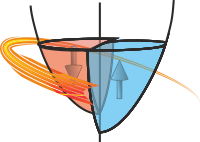ImageFile.sort¶
- ImageFile.sort(axis=- 1, kind=None, order=None, endwith=True, fill_value=None)¶
Sort the array, in-place
- aarray_like
Array to be sorted.
- axisint, optional
Axis along which to sort. If None, the array is flattened before sorting. The default is -1, which sorts along the last axis.
- kind{‘quicksort’, ‘mergesort’, ‘heapsort’, ‘stable’}, optional
The sorting algorithm used.
- orderlist, optional
When a is a structured array, this argument specifies which fields to compare first, second, and so on. This list does not need to include all of the fields.
- endwith{True, False}, optional
Whether missing values (if any) should be treated as the largest values (True) or the smallest values (False) When the array contains unmasked values sorting at the same extremes of the datatype, the ordering of these values and the masked values is undefined.
- fill_valuescalar or None, optional
Value used internally for the masked values. If
fill_valueis not None, it supersedesendwith.
- sorted_arrayndarray
Array of the same type and shape as a.
numpy.ndarray.sort : Method to sort an array in-place. argsort : Indirect sort. lexsort : Indirect stable sort on multiple keys. searchsorted : Find elements in a sorted array.
See
sortfor notes on the different sorting algorithms.>>> a = np.ma.array([1, 2, 5, 4, 3],mask=[0, 1, 0, 1, 0]) >>> # Default >>> a.sort() >>> a masked_array(data=[1, 3, 5, --, --], mask=[False, False, False, True, True], fill_value=999999)
>>> a = np.ma.array([1, 2, 5, 4, 3],mask=[0, 1, 0, 1, 0]) >>> # Put missing values in the front >>> a.sort(endwith=False) >>> a masked_array(data=[--, --, 1, 3, 5], mask=[ True, True, False, False, False], fill_value=999999)
>>> a = np.ma.array([1, 2, 5, 4, 3],mask=[0, 1, 0, 1, 0]) >>> # fill_value takes over endwith >>> a.sort(endwith=False, fill_value=3) >>> a masked_array(data=[1, --, --, 3, 5], mask=[False, True, True, False, False], fill_value=999999)
